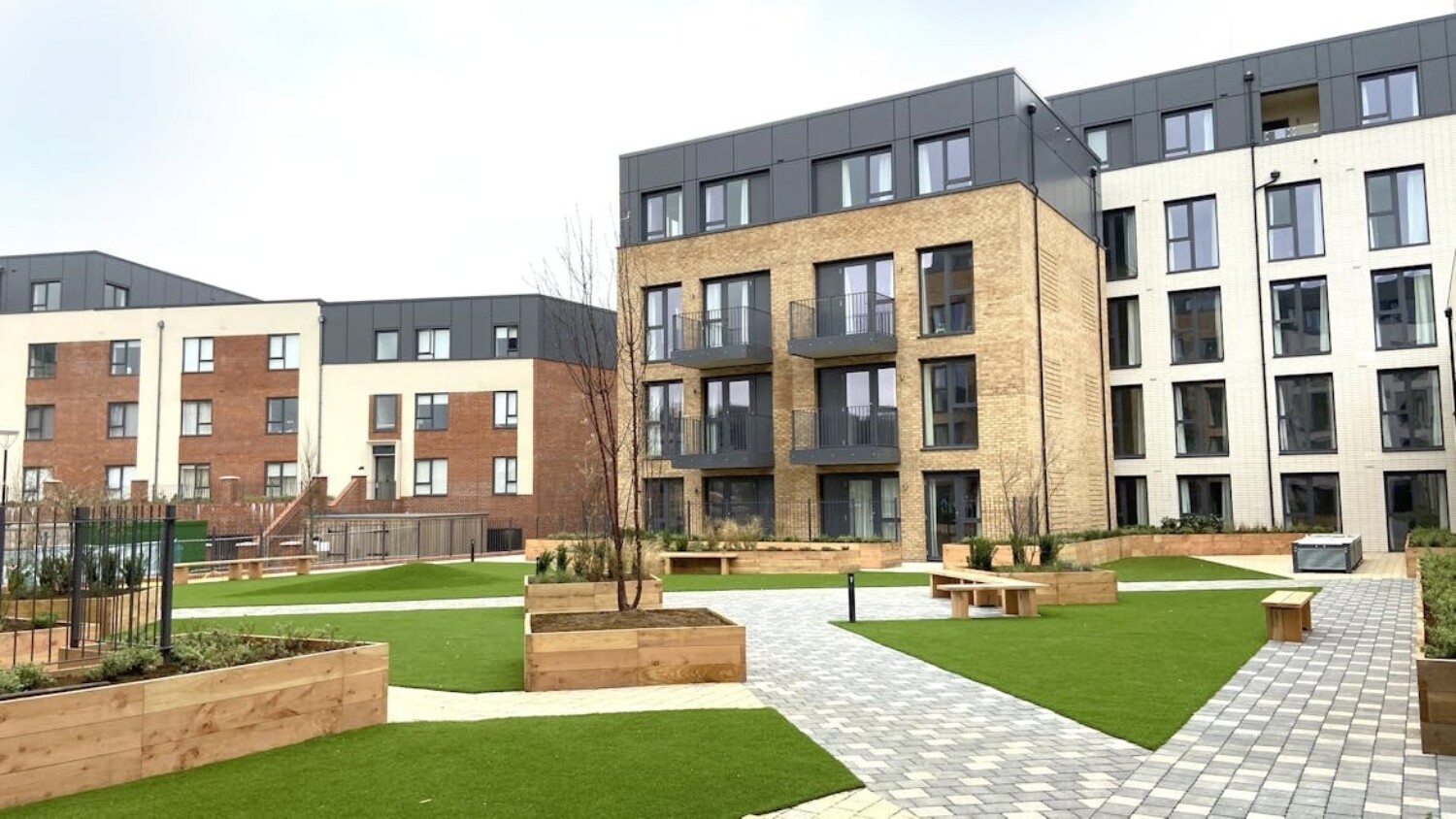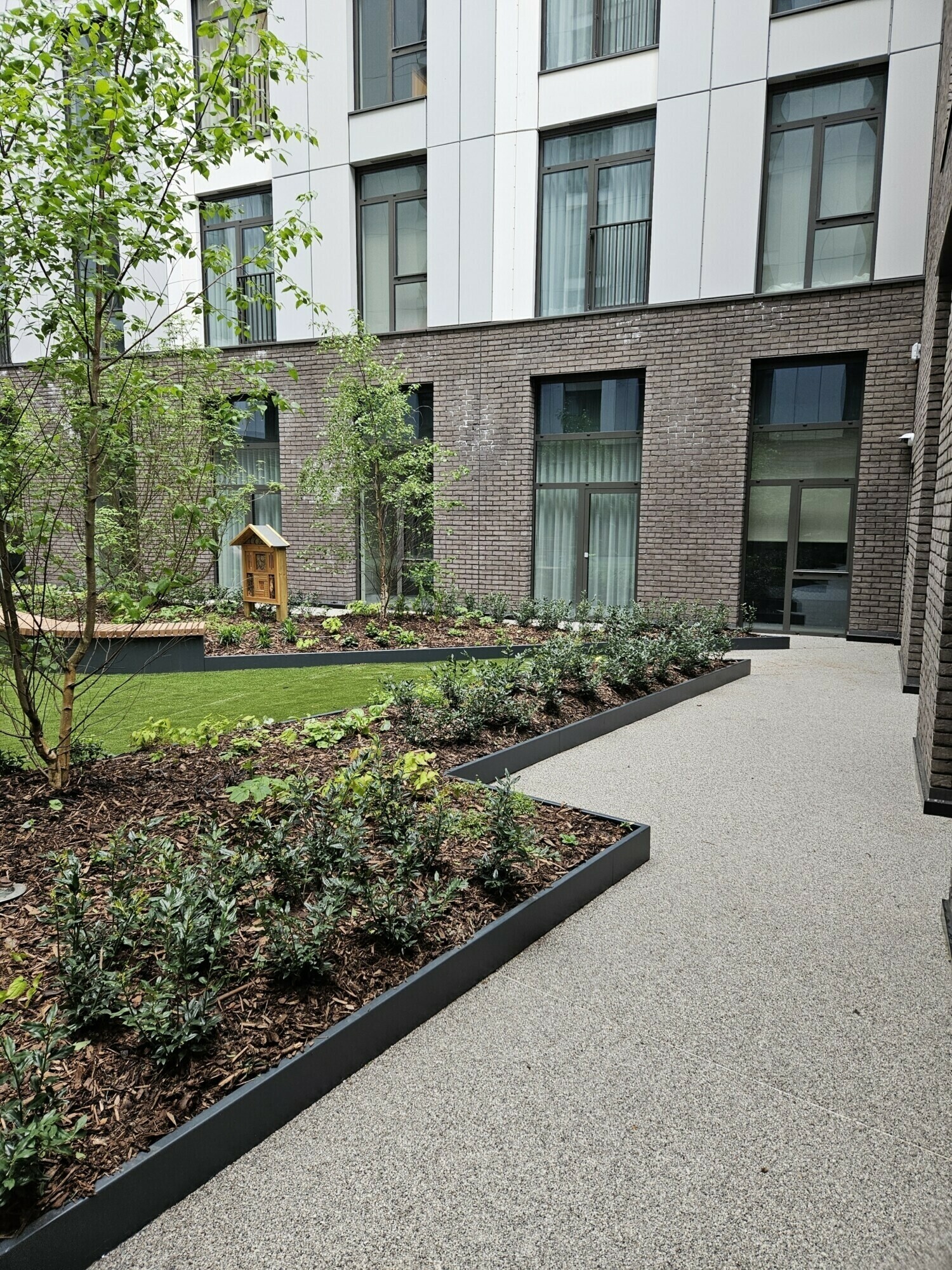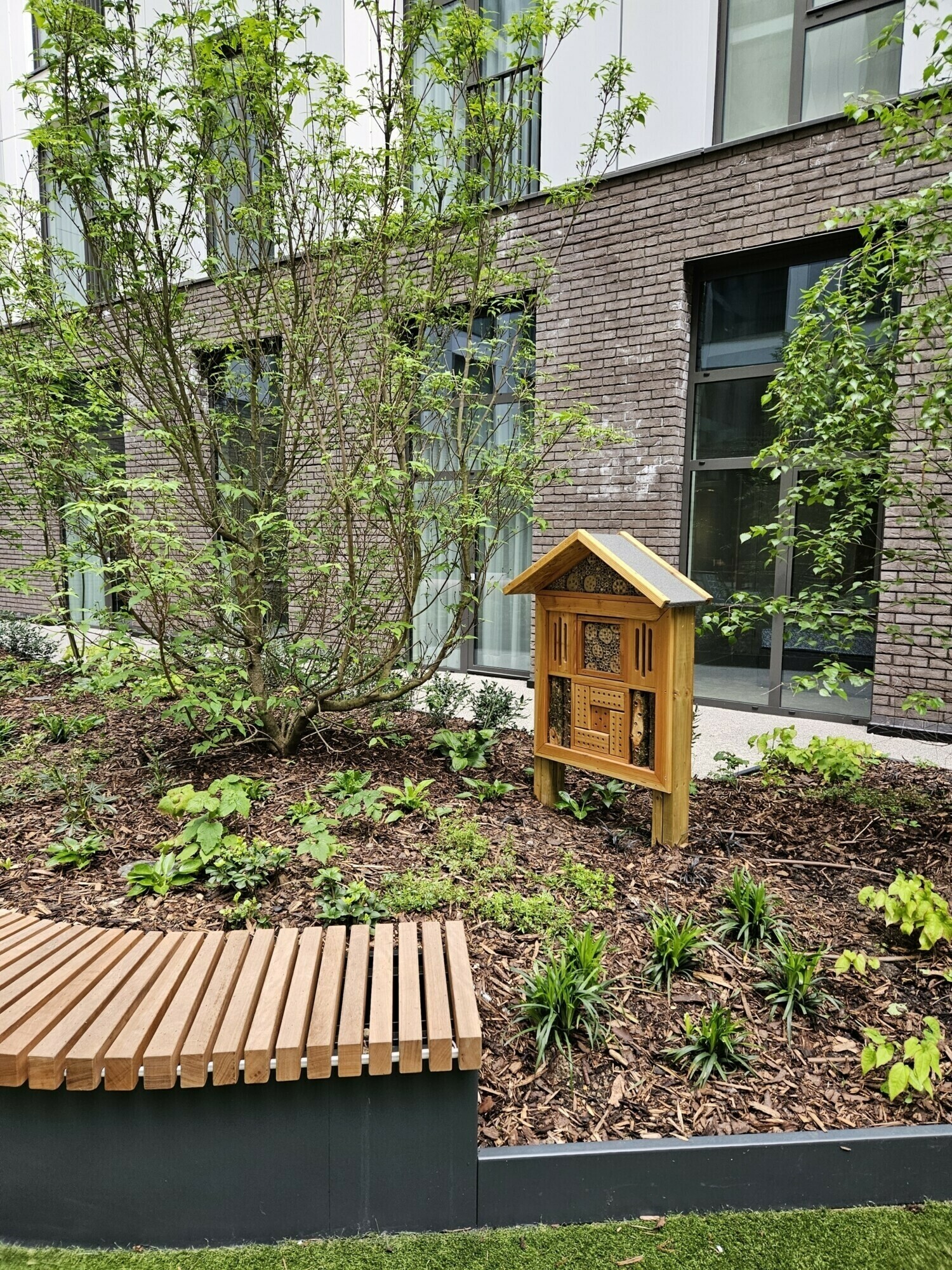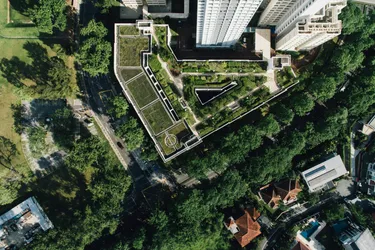
Interview with Luke Rootham, Axter’s Green Roof expert
The way developments interact with nature is changing. With Biodiversity Net Gain (BNG) regulations tightening, developers can no longer afford to treat green infrastructure as an afterthought. The challenge is clear: how to build responsibly while ensuring projects remain commercially viable.
Space-efficient solutions, such as green roofs, offer a unique opportunity to transform unused urban spaces into vibrant, biodiverse habitats.
In this interview, Luke Rootham, Axter’s Solar PV and Green Roof Product Manager – and a member of the Green Roof Organisation's Biodiversity Net Gain working group – discusses how green roofs can contribute to achieving BNG.

What is the rationale behind the BNG regulations, and how are they influencing construction practices?
BNG is designed to ensure new developments leave biodiversity in a measurably better state than before. The principle is simple: create more habitat than is lost.
The financial deterrent for failing to achieve BNG is considerable. The regulations include strict requirements for offsetting biodiversity loss if it cannot be mitigated on-site. Developers unable to meet requirements must purchase BNG credits, with costs varying depending on the habitat type. The intent is clear: make it more cost-effective to deliver biodiversity on-site than to offset it elsewhere.
What are the main challenges for developers, and how can roofing solutions help?
The biggest challenge is space. Maximising a site's commercial potential while ensuring enough space for BNG can be difficult, especially in urban environments. Roofs offer a possible solution by delivering biodiversity at height, making use of an area that would otherwise be underutilised.
The complexities of BNG regulations further add to the challenge. Developers must navigate a variety of requirements that differ across regions. In the Southeast, you have policies like the London Plan and the Urban Greening Factor, in other parts of the UK, councils are introducing frameworks such as the Brighton and Bristol Green Plans. These varying local requirements can make compliance more complex.


How is Axter helping clients meet BNG requirements?
We take a consultative approach, working closely with developers and architects from the outset. Clients typically have an ecological report detailing their BNG obligations. Our role is to design a roofing system that meets those requirements in the most practical and effective way.
We offer biodiverse green roofs that can meet a wide range of ecological and environmental requirements, often achieving higher BNG scores compared to traditional extensive or intensive green roofs. We also provide the full range of systems within these categories to suit various project needs.
For clients who require site-specific solutions, we work with seed specialists to create planting mixes tailored to local conditions.
We're not limited by the need for a flat green roof with a blanket system. We're open to pushing the boundaries of what’s possible, if our clients are too. Whether that’s an allotment-style garden or planting designed for healing purposes, we can explore all options. This is where Axter excels, as we thrive on delivering innovative and adaptable solutions.
Which sectors are leading the way in biodiversity-driven roofing?
We are seeing strong engagement from the public sector.
The Department for Education now mandates bio solar roofs on all new roof spaces under the CF21 framework. However, the picture is more complex when it comes to refurbishments. Education projects are often constrained by tight budgets and a strong focus on energy efficiency, meaning solar PV typically takes precedence over green roofs. The load-bearing capacity of existing structures can limit the installation of green roofs, adding further challenges in refurbishment projects.
The NHS is actively prioritising green infrastructure through its Sustainable Estates Solutions Framework, which aims to drive sustainable development and environmental initiatives across NHS buildings and facilities. This framework integrates eco-friendly, energy-efficient, and nature-based solutions into healthcare estates. The NHS is ambitious, with a growing recognition of the link between natural capital and public health. Axter was recently appointed to the framework to provide green, blue, and solar roof solutions.

What role does collaboration play in improving biodiversity outcomes?
Industry collaboration is critical. We work closely with ecologists and architects to ensure that roofing solutions deliver meaningful biodiversity benefits. We are also involved in research initiatives, including an Open University project in Milton Keynes that is studying how green roofs contribute to habitat connectivity. The findings will provide valuable data to support future BNG policies.
The NHS Sustainable Estates Solutions Framework is another great example of industry-wide collaboration.
What needs to change to accelerate the adoption of green roofs for BNG?
One of the biggest gaps in current policy is the lack of BNG requirements for retrofit projects. While minimum standards are in place, they may not fully achieve their intended impact. For example, if a site has no existing biodiversity, then a 10% net gain on zero is still zero. A policy shift that mandates biodiversity enhancements in refurbishments would drive much greater uptake of green roofs in the existing built environment.
There's also a need for greater recognition of the long-term benefits of green infrastructure. Solar PV is often prioritised because it has a clear financial payback period, whereas the cost-benefit case for green roofs is harder to quantify. However, studies show that improved air quality, flood risk reduction, and improved well-being all contribute to long-term financial savings. More education around these wider benefits would help decision-makers appreciate the full value of green roofs.


What is Axter's vision for the future of green roofs and biodiversity-led design?
We are committed to creating resilient roofscapes and making green infrastructure the standard rather than the exception. As part of our sustainability strategy, we have set an ambitious target for 15% of all Axter roofs to be green by 2030.
We are also exploring innovative ways to achieve green roofs on charitable and community-led projects, by using our climate and community resources to support initiatives that would otherwise be unachievable.
BNG is the best legislative development we've had in recent years for improving nature spaces, although there are still gaps that could be addressed.
Our long-term goal is to make it as easy as possible for clients to implement biodiversity-led design. Whether through BNG-compliant roofing systems, site-specific solutions, or collaborative industry research, we want to ensure that green roofs are recognised as a core component of sustainable development, not just a nice-to-have feature.
If you’re interested in learning more about Axter’s green roof products and services, please contact us.


